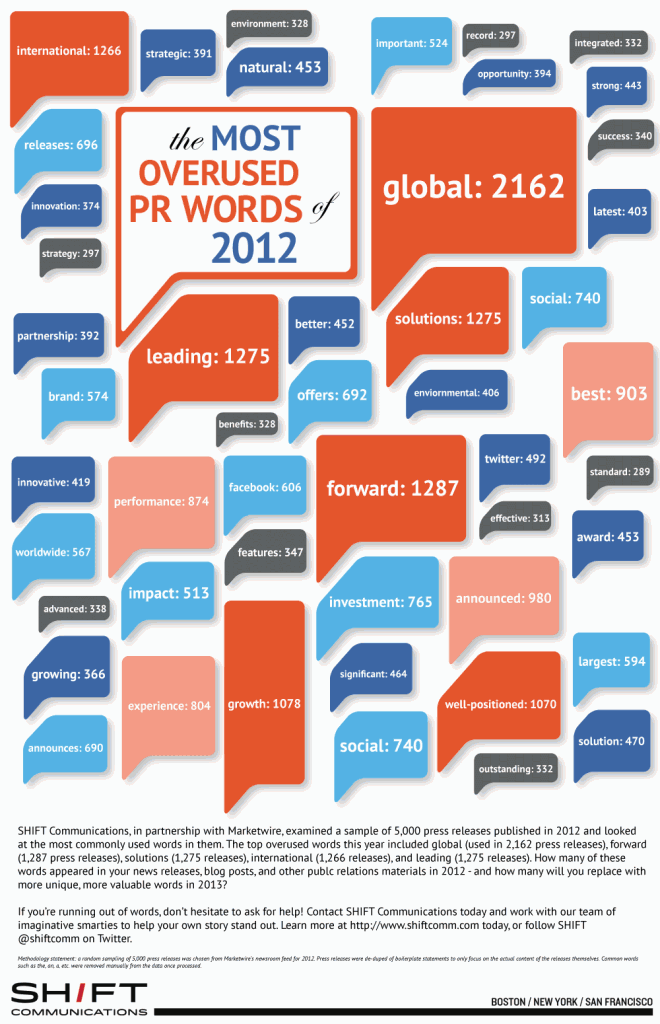Between industry contacts and my deal-with-the-devil press access to trade shows (in return for privileges, all the vendors get my email address), I see a lot of marketing pitches and press releases every day. An awful lot of them are, well, awful.
Or in more polite Canadian terms, sub-optimal.
There are two core problems: old formulas, and scant information.
First, the formula.
Small companies with limited working capital can’t usually afford to get good marketing help, so they often do it themselves. And the easiest DIY method is copying/adjusting/co-opting some other company’s crappy press release or handout, and making it their own. That is likely why I get endless releases that use terms like world leader or leading global provider. Somebody used that, so Me Too!
It’s also probably why I get formula quotes from executives saying they are pleased, delighted and my favorite, excited, about whatever agreement is being touted as momentous. The execs come off as morons.
There’s a whole,”Well, I guess that’s how these things are done” dynamic at play here among people who are good and sometimes brilliant engineers, but hopeless marketers.
Second, scant information.
It’s not enough to say something has been done or something new exists, but that’s what I often get dropped in front of me for consideration.
A case in point: A company this morning announced a new “no cost” digital signage media player. Ok, that got my attention, so I dug into it. But there was no substance. Three whole paragraphs, and the third was the standard blah-blah stuff about the company. I am in Hour Seven of waiting for answers sent to the company’s email drop.
The release didn’t get coverage here because a series of fundamental questions did not get answered. The thing did get mileage elsewhere, but whoever read that regurgitated as “news” release would also be left with a pile of questions.
Making it worse, and this is very common, there was nothing on the company website related to the release. Truly, nothing.
So here’s the simple remedy, broken down by key elements:
1 – Put yourself in the mindset of the target audience: Figure out what questions they’ll have about the product or service. Then answer them in the piece, proactively.
2 – Structure the message: Get the key information up at the top, so people are intrigued and want to read on. What does this thing or service do, and why should people care? It saves money. It makes something easier. It does something faster. Whatever.
3 – Use quotes that matter: They’re almost all manufactured/invented, so make ones that add to the story. No one cares that a CEO is delighted. Except the CEO. “This has made a remarkable difference to how we do business …” beats the crap out of “We are absolutely delighted to be working with …”
4 – Develop a basic communications plan: Get your ducks in a row for PR day. Your website needs to align with the release, and offer more. A big part of issuing PR is to drive people to your site, and if they show up and can’t find anything more than the press release that sent them there (or not even that), it’s a big missed opportunity. It also screams at people that you don’t have your act together.
You want to pull them to your website to dig deeper, read specs and FAQs. Your sales people also have to be prepped, and your resellers. “I dunno … ” is not the answer you want when somebody rings in wanting to know more.
You don’t need a six or seven figure retainer with a big communications firm to do that. If you can design a content management system or a media playback device, you can plan out an announcement. If you can’t, I don’t want to buy your gear.
5 – Test your message: We all know people. We all have friendlies we trust for an opinion. Ask them to read what you have in mind, and find out if they understand it and got all the information they needed.
6 – Avoid copying: You need a not too long, intriguing headline. You need a useful, equally intriguing opening paragraph. And you need contact information – for someone who’ll actually field calls and emails – at the end. The rest: just think it through for what people will want to know.
7 – Not too long: 500 words is heaps. Really.
